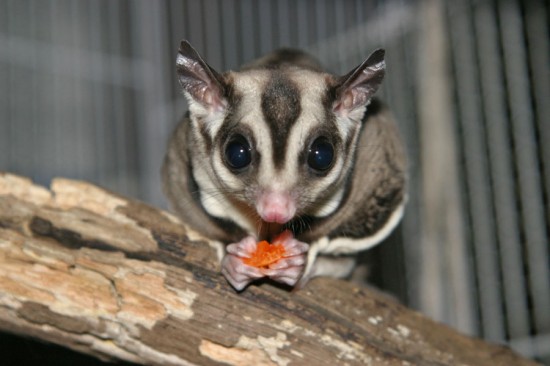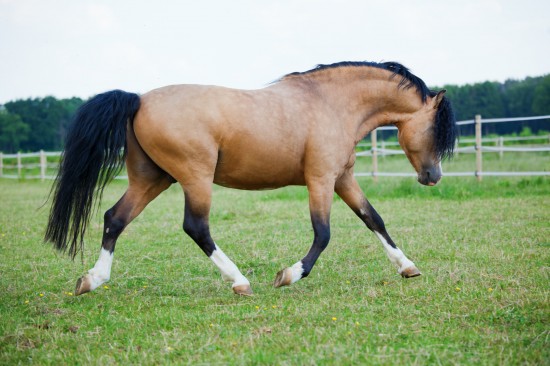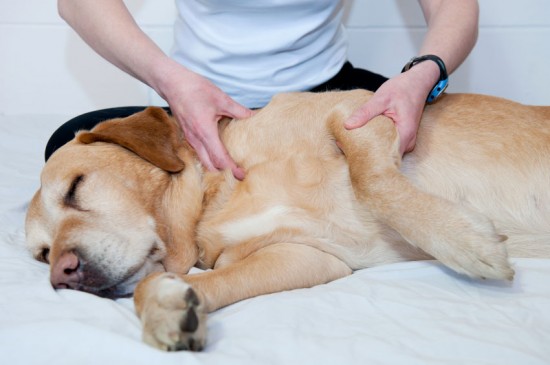
There are many ailments and conditions that are more prevalent in large breed dogs. Until further medical studies can be conducted and a pattern of inheritance established for these ailments and conditions, dogs that have a risk for these diseases will be said to have breed predisposition.
This article will discuss five of the medical conditions and diseases affecting large breed dogs.There are many ailments and conditions that are more prevalent in large breed dogs. Until further medical studies can be conducted and a pattern of inheritance established for these ailments and conditions, dogs that have a risk for these diseases will be said to have breed predisposition. If a breed of dog is known to have an inherited condition each animal should be tested before breeding with another. The only way to prevent the spread of known ailments or condition is to not breed a carrier of the disease. Since some ailments or conditions may skip a generation or two before appearing in the breed, there is no fool proof way to stop a genetic disorder from being passed on.
One of the most common heart defects found in large breed dogs is congenital aortic stenosis. With aortic stenosis the heart must work harder to pump an adequate blood supply because of an obstruction to the flow of blood. Just as in humans, dogs can have mild to severe aortic stenosis. With mild stenosis a dog will most likely show no signs of the disease and have a normal life expectancy. If the dog suffers from moderate to severe stenosis, their activity level will be greatly reduced due to the heart not pumping enough blood to the rest of the body. Over time the disease leads to the thickening of the heart muscle and this can eventually lead to an early death.
Getting medical check ups for your pet and catching aortic stenosis in the early stages may aid in the treatment.
Gastric Dilation Volvulus (GDV) or as it is commonly known as bloat, is predisposed to the deep-chested large breed dogs. Be aware that any dog can fall victim to this condition and unfortunately it is usually fatal. There is no definitive cause of GDV but over eating or drinking has been linked to some cases in predisposed breeds. During GDV, the stomach rotates (the stomach of a dog is securely fixed at the top in one spot) making the stomach distension painful and stretching the blood vessels reducing circulation to the stomach. This can damage the lining of the stomach which may lead to bacteria entering the bloodstream. Also the blood flow to the heart may be interrupted due to the pressure of major veins from the distended stomach. Receiving immediate medical attention is imperative as surgery is the only hope of the dog surviving.
Feeding your dog smaller meals three times a day instead of one big meal and limiting the amount of water they drink at one time may help prevent GDV. Also, placing their water and food dishes on an elevated food stand may aid in the digestion of their food.
Hypothyroidism is a common condition usually found in mid to large breed middle age dogs. This condition is caused when the thyroid gland is damaged or destroyed and not enough thyroid hormone is produced. The resulting effects of low thyroid production can be:
?Lethargy
?Weight gain
?Hair loss
?Anemia
?Slow heart rate
?Dry coat
There are blood tests the vet can run to diagnose this condition and once diagnosed the condition is easily treated with a daily dose of synthetic thyroid hormone which will need to be administered for the rest of the dog's life. Canine hip dysplasia is one of the most common inherited diseases in large breed and giant breed dogs. This orthopedic disease may affect smaller breed dogs as well. When obtaining a puppy or dog from a breeder, make sure you ask for and receive hip certification on the parents and ancestors of the puppy or dog. Hip dysplasia results from abnormal hip joint development in a dog. It may or may not affect both right and left sides. The hip joint is a ball and socket joint, the ball (femur) fits into the socket (acetabulum) and rotates freely. Ligaments and tissue hold these bones together and cartilage cushions the movement of the bones. With hip dysplasia the bone slips partially out of socket and the ligaments are loose. As this continues to happen other degenerative changes take place in the joint. Over time your dog will find it painful to stand and walk and will have difficulty climbing stairs.
Making sure your puppy doesn't gain weight too quickly and not letting your older dog carry excess weight reduces the chance of hip dysplasia. If you do suspect your dog may be showing signs of hip dysplasia, get them checked out by the vet and find out what you can do to relieve them of pain.
Osteosarcoma or bone cancer generally affects large and giant breed dogs. This is a very aggressive cancer and is more frequent in older male dogs. Medical research has yet to find the cause of these cancers. Most bone cancers are found to develop below the elbow or near the knee of dog's limbs. Usually a swelling of the area and pain in the joint is a first indication of a medical dilemma. Unfortunately by the time medical treatment is sought, the tumor may have already metastasized to the lungs. Treatment of this cancer is usually amputation and chemo. Even with amputation and chemotherapy, the life expectancy of a dog is approximately one year. There is no preventable treatment for Osteosarcoma.
 Do You Speak Meow?
Do You Speak Meow
Do You Speak Meow?
Do You Speak Meow
 Sugar Gliders - What Are They And Do I Want One As A Pet?
Sugar Gliders - W
Sugar Gliders - What Are They And Do I Want One As A Pet?
Sugar Gliders - W
 Does It Matter At What Age A Female Cat Is Spayed?
Does It Matter At
Does It Matter At What Age A Female Cat Is Spayed?
Does It Matter At
 Maintaining Paddocks Equals Healthier Horse
Maintaining Paddo
Maintaining Paddocks Equals Healthier Horse
Maintaining Paddo
 Holistic Therapies In Veterinary Medicine
Holistic Therapie
Holistic Therapies In Veterinary Medicine
Holistic Therapie
Copyright © 2005-2016 Pet Information All Rights Reserved
Contact us: www162date@outlook.com